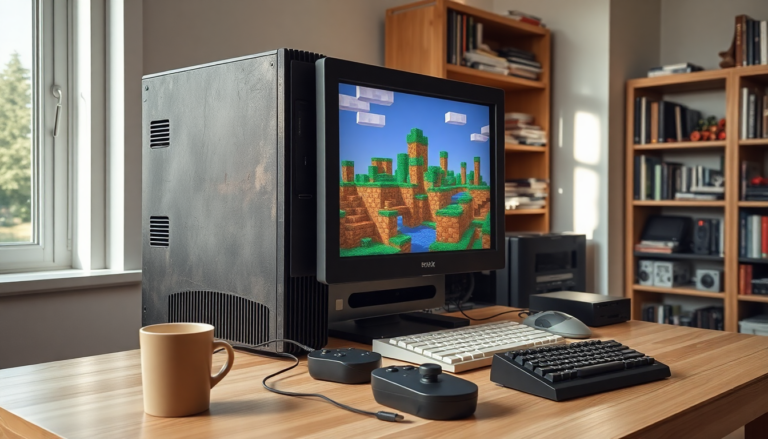Argomenti trattati
The challenge of playing Minecraft on outdated hardware
In the world of gaming, pushing the limits of hardware is a testament to a player’s determination and creativity. Recently, a fascinating experiment showcased the efforts of a channel named Budget-Builds Official, which aimed to run Minecraft on an astonishingly outdated setup. This endeavor involved using a graphics card that is over two decades old, challenging the norms of modern gaming requirements.
Understanding the specifications
To grasp the magnitude of this challenge, it’s crucial to understand Minecraft’s standard requirements. Typically, the game demands a system running Windows 10, a minimum of 2GB of RAM, and a capable graphics card like the Intel HD Graphics 4000 or AMD Radeon R5. However, Budget-Builds Official took a different path by utilizing a desktop running Windows XP, equipped with an ancient 3D Phantom XP-2800 GPU from Pine Technology, which debuted in 2005. This GPU features a mere 8MB of VRAM, a far cry from modern gaming standards.
Making sacrifices for success
With such limited resources, Budget-Builds Official quickly realized that compromises were essential. The team opted to run an older version of Minecraft—specifically, Alpha 1.2.6. This choice was driven by the need for compatibility with the outdated hardware. The system’s Athlon 64 CPU required a cooler to ensure efficient operation alongside the 3D Phantom XP-2800 card, and the team promptly installed this before diving into the testing phase.
Initial testing and troubleshooting
The first attempt to run Minecraft Alpha 1.2.6 was met with failure, primarily due to issues with OpenGL support on the antiquated GPU. However, perseverance paid off when the team discovered that Microsoft’s SiS drivers could enable the card to run the game—albeit only when connected to a CRT monitor. After implementing these drivers, the team witnessed their first victory: Minecraft Alpha 1.2.6 was finally operational. Yet, this success was merely a stepping stone toward a greater goal.
Testing newer versions
Following the initial victory, the team shifted focus to a more recent version: Minecraft 1.6.4. Unfortunately, this version only managed to load at a staggering one frame per second for two minutes before crashing. To salvage the situation, Budget-Builds Official made significant adjustments to the gameplay settings. By disabling all visual effects—such as clouds, fog, and animations—and minimizing resolution, they aimed to enhance playability. Additionally, the world server was run on a nearby laptop, further optimizing performance.
Creative solutions and limitations
The experimentation did not stop there. To avoid crashes, the team implemented an 8×8 texture pack, which significantly reduced the graphical load. This entire project exemplifies the spirit of creativity and resourcefulness within the gaming community. While it may not be practical for everyday gaming, this endeavor showcases an impressive feat: running Minecraft on hardware that many would consider obsolete.
A unique gaming experience
Ultimately, this experiment demonstrates that gaming is not solely about high-end specifications; it is also about passion and the willingness to explore uncharted territories. Budget-Builds Official’s project serves as a reminder that with enough determination and ingenuity, even the most outdated systems can provide a unique gaming experience. Whether you’re a casual player or a dedicated enthusiast, the thrill of pushing boundaries remains at the heart of gaming.
Stay updated with the latest news, analysis, and reviews in the tech world by following Tom’s Hardware on Google News. Don’t forget to subscribe for the best insights delivered straight to your inbox.
Ash Hill, a contributing writer for Tom’s Hardware, brings a wealth of knowledge in hobby electronics, 3D printing, and PCs. She manages various projects and continuously seeks the best deals in technology.

